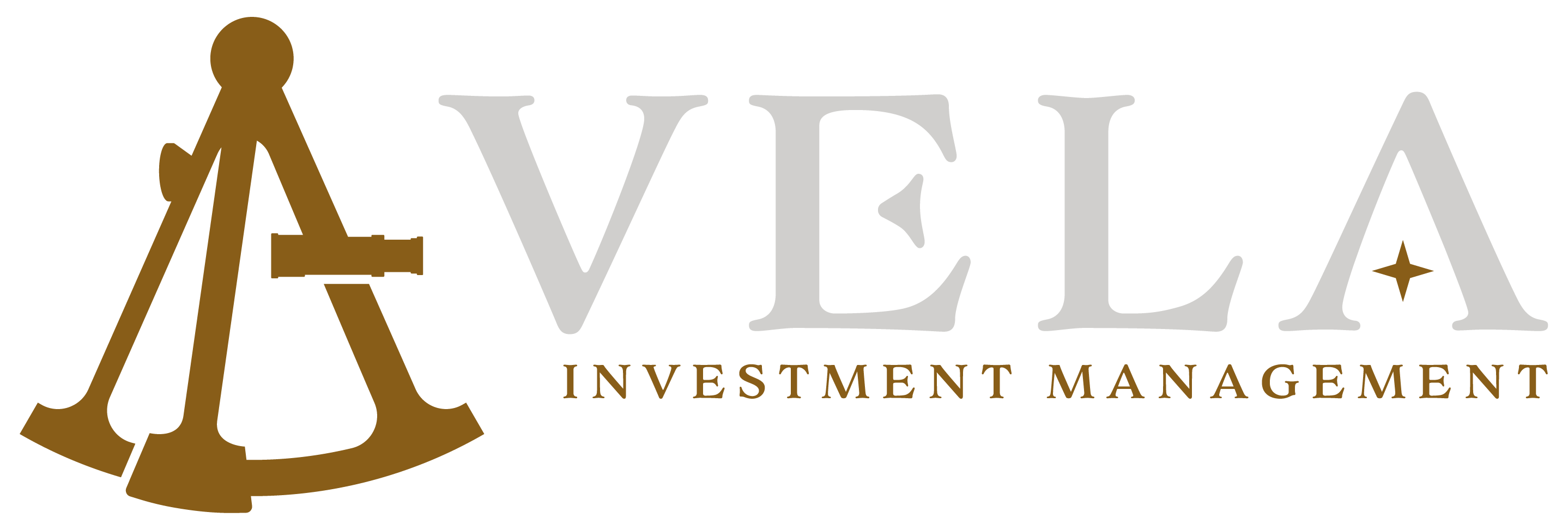When we structured Large Cap Plus four years ago, we sought to reduce downside risk through the use of options and short selling given our view that the next decade was likely to prove more difficult for capital markets. Rising deficits, declining birth rates, and a populist revolt against free trade set the stage for fragility. Despite these headwinds, U.S. large cap companies are viewed by the market as the “best house on a bad block” and possess significant competitive advantages versus many global peers. However, these advantages are reflected in valuations to such extent that by our estimates, many of the market leaders must remain dominant for two decades for returns to approximate long-run averages.

While the market is efficient at incorporating contemporary information, over the longer term its crystal ball is cloudier. Several decades ago, it was inconceivable that IBM would be displaced from its dominant position in mainframe computing. “Nobody ever got fired from going with IBM,” was the popular refrain. Today, IBM’s earnings per share have not grown since before the Financial Crisis2. Nor is this unusual– Pfizer, one of the hottest stocks in the 1990s on the heels of Lipitor and Viagra, has seen its earnings power stagnate since the end of the Clinton Administration3. Blackberry went from status symbol to historical footnote in only a few years. AMD and Nvidia have former powerhouse Intel on the ropes4. It is quite rare to sustain high levels of growth off a large earnings base because capitalism works and competition emerges, even in instances where companies have perceived monopolistic advantages.
Mathematically, the higher the price to earnings (P/E) multiple of a stock, the longer the company must sustain earnings growth to justify its valuation. By way of simplified illustration, let’s assume that 100% of earnings are paid out as dividends to shareholders each year. If a company can sustain 15% earnings per share growth per year, the payback period at 35x P/E is 2042, 18 years from now5.
Few large cap companies manage to sustain several decades of 15% EPS growth, so let’s re-run the scenario assuming a still generous 10% annual EPS growth. Now, the payback period at 35x P/E is 2052, or 27 years from now, which is an eternity in capital markets.
The challenge for investors is that US tech stocks generate such significant levels of incremental free cash flow that they dominate “quality” metrics, but due to near record operating margins and valuation levels they will need to sustain high levels of growth for nearly two decades for the stocks to generate a decent return. Valuations are also extended for many non-tech “quality” companies such as Costco, which trades at nearly 50x P/E.
In ideal circumstances, the Fund would be nearly fully invested with a bias towards quality compounders at reasonable prices. When such discounts do not readily exist, our goal is to resist the temptation to move down the quality spectrum. Instead, we use a combination of written call options, option collars, and shorts with the aim of reducing valuation risk and generating additional income.
In our view, the bar for many of the market leaders to produce earnings which justify market prices is now approaching perfection. Accordingly, approximately 40% of the Fund’s net assets are collared with written calls and put options as of September 30, 2024. While we feel quite good about our holdings’ long-term prospects, the market’s overall valuation levels appear to warrant a degree of downside protection. Artificial intelligence enthusiasm has made the past two years challenging for value centric investors. However, we are optimistic the odds going forward are far more favorable.
Disclosures:
VELA Investment Management, LLC is a registered investment adviser. Information presented is for educational purposes only and does not intend to make an offer or solicitation for the sale or purchase of any specific securities, investments, or investment strategies. Investments involve risk and unless otherwise stated, are not guaranteed. Be sure to first consult with a qualified financial adviser and/or tax professional before implementing any strategy discussed herein. Past performance is not indicative of future performance.
The views expressed are those of VELA Investment Management, LLC as of 10.18.2024 and are subject to change. These opinions are not intended to be a forecast of future events, a guarantee of future results, or investment advice. Third-party information in this report has been obtained from sources believed to be accurate; however, VELA makes no guarantee as to the accuracy or completeness of the information.
Investors should carefully consider the investment objectives, risks, and charges and expenses of the fund before investing. The prospectus contains this and other information about the fund, and it should be read carefully before investing. Investors may obtain a copy of the prospectus by calling 833-399-1001.
The funds are distributed by Ultimus Fund Distributors, LLC. (Member FINRA). VELA Investment Management, LLC and Ultimus Fund Distributors, LLC are not affiliated.
As of 9.30.2024 the annualized Total Return for the I-Shares 1-year for the VELA Large Cap Plus Fund (Class I) was 24.04%, 3-year was 9.90%, and since inception (09.30.2020) was 16.22%. The total expense ratio for the Large Cap Plus Fund (Class I) is 1.20%.
Mutual fund performance data quoted represents past performance. Past performance does not guarantee future results. The investment return and principal value of an investment will fluctuate so that an investor’s shares, when redeemed, may be worth more or less than their original cost. Current performance may be lower or higher than the performance data quoted. Investors may obtain mutual fund performance data current to the most recent month-end by calling 833-399-1001.
Important Risk Information: An investment in the Fund involves risk, including possible loss of principal. The principal risks of investing in Funds include equity, market, management and non-diversification risks. The market value of a security or instrument may decline due to general market conditions that are not specifically related to a particular company, such as real or perceived adverse economic conditions, changes in the general outlook for corporate earnings, changes in interest or currency rates or adverse investor sentiment generally.
The Large Cap Plus Fund uses short selling which incurs significant additional risk. Theoretically, stocks sold short have the risk of unlimited losses.
A complete list of portfolio holdings can be found at www.velafunds.com.
Indexes are not available for direct investment.
Definitions & Footnotes:
The payback period is the amount of time between the date of the initial investment (i.e., project cost) and the date when the break-even point has been reached. Otherwise stated, the amount of time it takes an investor to recover the cost of the initial stock purchase. A simplified calculation for the payback period is the initial investment divided by expected cash flows per year. Cash flows are a function of both the company’s earnings per share and the percentage of earnings the company elects to return to shareholders.
Quality compounders are businesses that produce steady earnings growth across economic cycles while also generating relatively high returns on invested capital.
Valuation risk is the risk that an entity suffers a loss when trading an asset or a liability due to a difference between the accounting value and the price effectively obtained in the trade.
Price to earnings ratio, or P/E, is a way to value a company by comparing the price of a stock to its earnings. The P/E equals the price of a share of stock, divided by the company’s earnings-per-share.
Operating Margin measures how much profit a company makes on a dollar of sales after paying the costs associated with production, such as wages and raw materials, but before paying interest or tax.
Free cash flow is the money that the company has available to repay its creditors or pay dividends and interest to investors. It is money that is on hand and free to use to settle liabilities or obligations.
Short selling (‘shorting’) refers to the sale of a security or financial instrument that the seller has borrowed. The short seller believes that the borrowed security’s price will decline, enabling it to be bought back at a lower price for a profit. The difference between the price at which the security was sold and the price at which it was purchased represents the short seller’s profit or loss.
Option refers to a financial instrument that is based on the value of underlying securities, such as stocks, indexes, and exchange-traded funds (ETFs). An options contract offers the buyer the right (but not the obligation) to buy or sell—depending on the type of contract they hold—the underlying asset.
For a call option, the option buyer purchases the right to buy a security at a specified price at any point before an agreed-upon expiry date in return for a premium which is paid to the option seller.
For a put option, the option buyer purchases the right to sell a security at a specified price at any point before an agreed-upon expiry date in return for a premium which is paid to the option seller.
A collar is composed of long stock, a short call option, and a long put option, with the call and put in the same expiration. The collar’s long put acts as a hedge for the long stock (potentially limiting its downside losses), and the short call helps finance the long put.
1Source: Bloomberg, Chart: VELA Investment Management, LLC
2,3,4Source: Bloomberg
5Assuming an 8% required return and no terminal value.
Author

Kyle Schneider, CFA
Jun 16, 2020

